A few Black Locust (Robinia Pseudoacacia) and Black Cherry (Prunus Serotina) samples were subjected to chatoyance measurement straight after being cut with a reasonably sharp tablesaw, and then again after standard sanding up to 1500-grit. The charts below compare the results showing that good or bad chatoyance and brightness may generally be spotted just after a tablesaw cut – at least with these species.
Black Locust
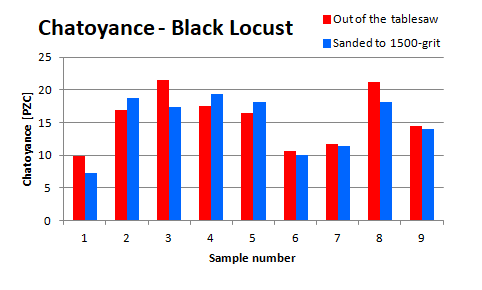
Brightness is not significantly altered by sanding:
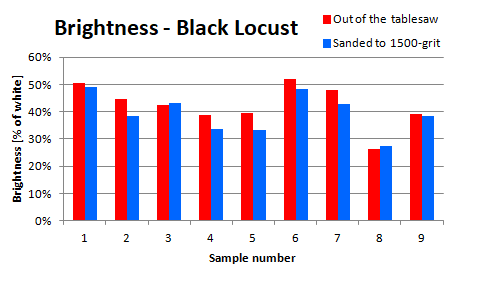
GIFs below provide a visual representation of some cases:








Black Cherry
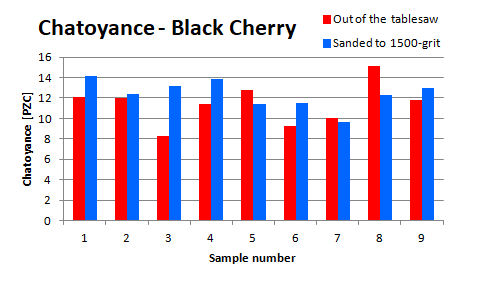
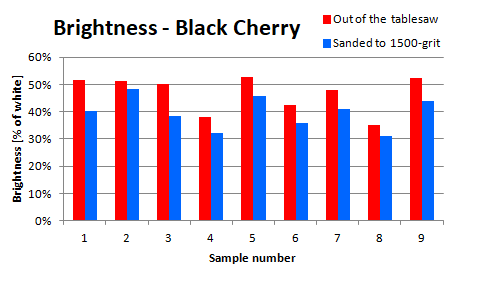




Want to know more? Get Woodworker’s Guide to Chatoyance!
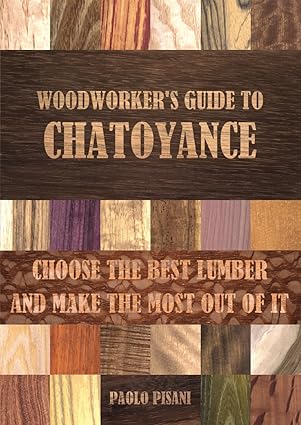
Available on Amazon in 12 countries – just click on your flag below…
… and enjoy the read!











